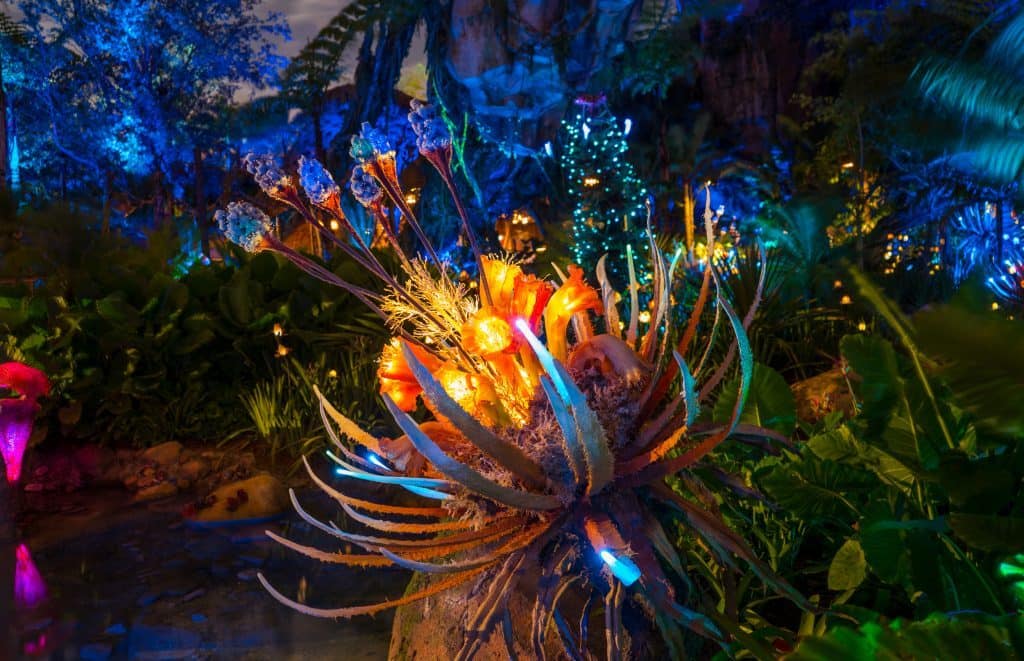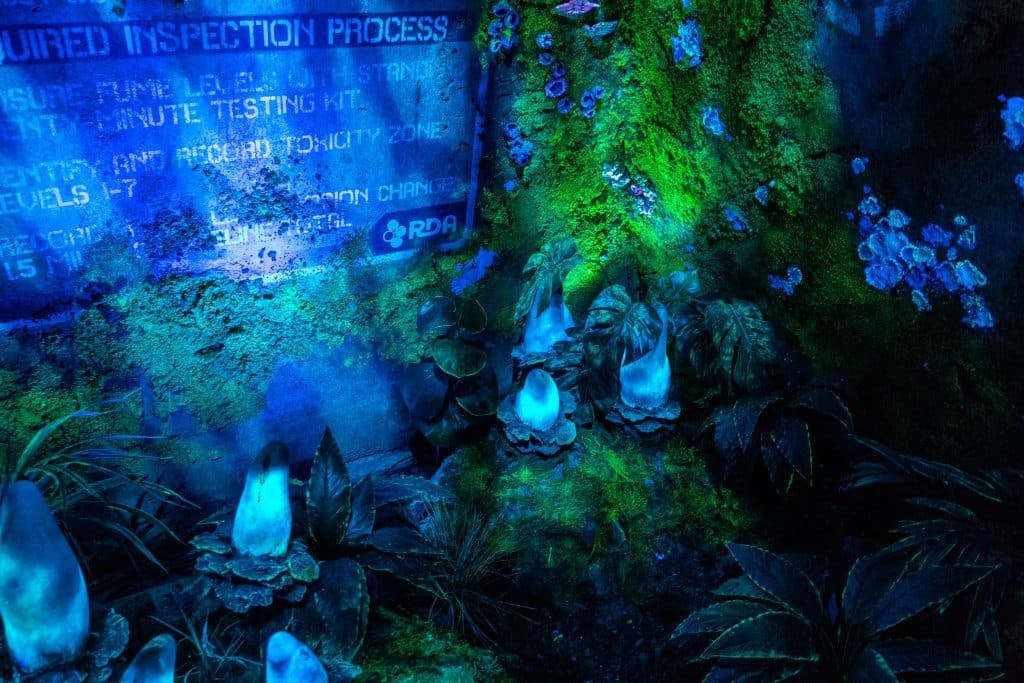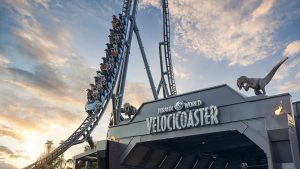Theme park operators like to claim that a number of their themed lands are completely different during certain times of the calendar – when the Christmas decorations are out for the holidays, for instance, or during the various limited-run engagements, like at Epcot’s various seasonal food and flower events, which offer experiences that guests can’t otherwise be exposed to.
For Pandora: The World of Avatar, the assertion of being different comes nightly instead of annually, and it just so happens to really be true – the theme park land is an entirely new experience each and every night. Once the sun goes down, the bioluminescent plants that helped to make the 2009 film so famous (and so lucrative) come out, transforming the beautiful Valley of Mo’ara into something even more exotic and awe-inspiring. If you visit Pandora only during the day, you are missing one of the key components that make The World of Avatar such an immersive stop – and such an important step in the continuing evolution of theme park lands.
Pandora: The World of Avatar at night – What’s different

Before we dive into what makes the alien moon of Pandora so strange and beautiful at night, we should probably get into what doesn’t change all throughout the Valley of Mo’ara.
The short answer is this: almost everything in Avatar Land is precisely the same at night as during the day. Both of the area’s attractions – Avatar Flight of Passage and Navi River Journey – feature no change in composition or, even, atmosphere, and neither do Pandora’s eateries or main gift shop, Windtraders (though eating your custom-made bowl in Satu’li Canteen’s outdoor section does certainly take on a whole new vibe). And even the live percussion show is identical in its nighttime performances as with its daytime ones.
The change, then, relies solely on the landscaping of the Valley of Mo’ara, with how the many bioluminescent plants spring to life and how, even beyond the alien lightshow, the traditional flora and fauna are bathed in different lighting to help transform the land into an entirely different landscape (even the floating mountains are swathed in purple, helping to make them stand out in a whole new way). It’s a relatively straightforward effect, but it’s still a magical one – one that you can get lost in for a very long time.
Compounding the wildlife are two further immersive elements: the area’s walkways, which are themselves lit up in a mesmerizing way, and its natural soundtrack, which features a whole new cast of animals as they rustle through the brush, call out to one another, and make their (virtual) way through the fictitious valley. This last effect is an entirely convincing one during the day, when it helps to sell guests on the notion that they truly are in an alien environment, but it really becomes heightened at night; you almost believe you can see the creatures making their way in between the bioluminescent plants and off into the darkness.
Think of the effect nightfall has on The Wizarding World of Harry Potter – Diagon Alley, how all the gaslights turn on and the buildings seem to come to life in a more intimate, charming way. Multiply this immersion factor by about five, and you’ll have a pretty good idea of what to expect from Pandora: The World of Avatar once night arrives.
Pandora: The World of Avatar at night – What if I can’t get there after sunset?

Due to the rigors of your vacationing schedule, the demands of your family, or the crush of people that the newly-opened-past-dusk Animal Kingdom now attracts, you might find yourself unable to visit Pandora once the sun goes down and the land is transformed. Worry not – Disney has actually managed to permanently incorporate a bit of the nighttime magic into the attractions themselves.
The first to come to mind, of course, is Na’vi River Journey, whose very premise revolves around taking a peaceful boat ride through the Valley of Mo’ara at night. This will enable guests to see all the splendid bioluminescent flora and fauna, as well as to experience some additional elements that they wouldn’t otherwise see at all – such creatures as the flying fan lizards and, even, the Na’vi themselves can only be created in the safe confines of a dark ride’s show building, after all. And while Avatar Flight of Passage itself is set (mostly) during the day, its queue manages to sneak “outside” for a portion of its miles-long duration, with this section being set in a nighttime forest. It’s a relatively small stretch of the queue, but it’s an immersive one, nonetheless.
There is a certain quality that is lost when you can’t freely roam around the area, taking in the alien visuals for yourself at any angle you wish, but even when these beautiful sights are presented to you in a predetermined manner, they’re still breathtaking – and absolutely worth seeing, whether you’re able to visit after the sun goes down or not.
Photo Gallery
- Avatar Flight of Passage in Pandora: The World of Avatar at Disney’s Animal Kingdom
- Na’vi River Journey in Pandora: The World of Avatar at Disney’s Animal Kingdom
- Pandora: The World of Avatar at night at Disney’s Animal Kingdom
- Pongu Pongu (limited-service bar) at Disney World’s Pandora: The World of Avatar
- Satu’li Canteen (fast-casual) at Disney World’s Pandora: The World of Avatar
- Windtraders at Pandora: The World of Avatar at Disney’s Animal Kingdom

